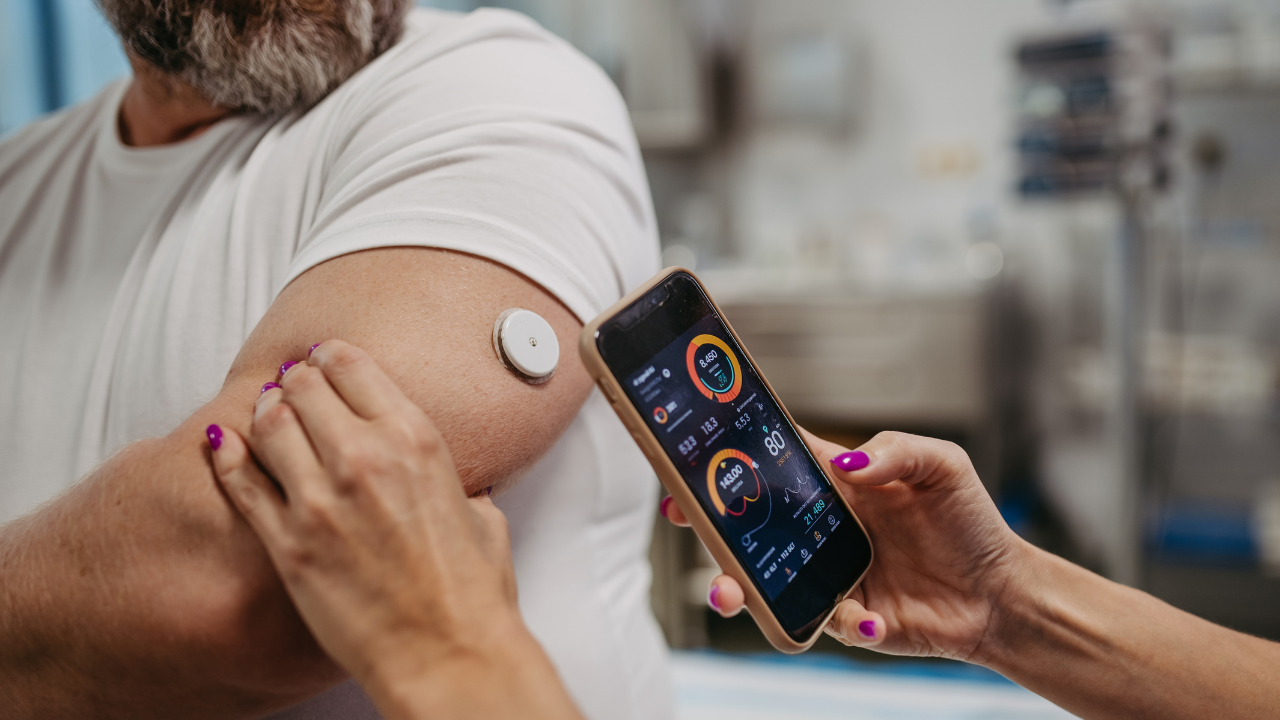
What Are Blood Sugar Monitors, and Why Should You Care?
Feb 23, 2025You might have seen your favorite Peloton instructor wearing one, or perhaps a favorite influencer.
But blood sugar monitors are more than just the latest fad.
Blood sugar monitors track your glucose levels throughout the day, giving you real-time data on how your body reacts to that morning bagel or your "healthy" smoothie (yes, even the green ones can be sugar bombs). With this data, you can identify the foods that spike your blood sugar and those that keep it steady—because stability is the name of the game if you’re aiming for consistent energy, weight management, and fewer snack attacks.
Imagine this: You’re rocking your day, but suddenly it’s 3 PM, and you’re falling asleep at your desk. You think you need coffee, but your blood sugar monitor might say, “Nope, it was the granola bar from lunch.” These insights can change everything.
Utilizing a CGM was one of the key tools that helped me lose the 10lbs of perimenopause that crept in during my 41st year.
I had blood sugar jumps after “healthy” foods that drained my energy and I had no idea why I was so tired.
I finally understood why after a night of heavy carbohydrate intake (think pizza followed by cookies or ice cream) I was starving in the morning (major low blood sugar reaction).
It finally made sense why intermittent fasting did nothing for me. I had to fast longer, 14 hours wasn’t long enough to use up the carbohydrate excess that was wreaking havoc on my metabolic health.
But blood sugar monitors (CGMs) are incredibly expensive, unless you have diabetes and can get a prescription. So before you go out and buy one, let’s determine if one can help on your health journey.
How Can Blood Sugar Monitors Help You?
1. Decode Your Energy Levels
Ever wonder why you’re bouncing off the walls one minute and curled up like a sleepy cat the next? Blood sugar monitors can help you figure out if your meals are to blame. If your glucose spikes and then crashes, your energy likely does the same. Learning to avoid these swings means no more mid-afternoon naps (unless they’re intentional and luxurious).
2. Take Control of Your Cravings
Cravings often hit when your blood sugar is on a rollercoaster ride. With a monitor, you’ll see patterns that explain why you’re eyeing those cookies like a hawk at 9 PM. When you stabilize your glucose, those cravings become way less bossy. It’s like reclaiming your brain from sugar’s sneaky grip.
3. Make Smarter Food Choices
Think your “healthy” breakfast is keeping you on track? Your monitor might tell a different story. Foods like oatmeal, smoothies, or even fruit can cause unexpected sugar spikes. With this tool, you can tweak meals to keep your blood sugar steady. Hello, eggs and avocado toast.
Who Should Use Blood Sugar Monitors?
These aren’t just for people with diabetes anymore. If you’re chasing weight loss, better metabolic health, or simply want to understand your body better, a CGM can be your new BFF. It’s like having a personal trainer for your metabolism—one that doesn’t yell at you to do burpees.
Tips for Getting Started
Learning to decode your blood sugar is something I teach extensively on inside my online program, whether or not you decide to invest in a CGM. Here’s the 101 introduction to determine if your blood sugar might be playing a role in your energy, cravings, or weight loss challenges:
- Start Simple: You don’t need to track every meal like a science experiment. Focus on meals or snacks that tend to leave you feeling “off” and see what’s happening. If you feel really tired in the afternoon, pay attention to what you had for breakfast and lunch. If it was carbohydrate heavy, try a high protein breakfast the next day and see if you feel the same way in the afternoon.
- Pair Foods Wisely: Love bread? Pair it with some protein or fat to slow down the glucose spike. Think peanut butter with your toast or adding cheese to your crackers. For some, adding protein and fat will mitigate the blood sugar spike. But if you are trending towards diabetes, it may not be enough. This is hard to decipher without a CGM.
- Experiment and Learn: Try swapping out certain foods and watch how your energy and cravings respond. It’s like a fun (and useful) science project where you’re both the scientist and the subject.
Why This Matters for Your Metabolic Health
Understanding your blood sugar is foundational for achieving metabolic flexibility—that amazing ability to switch between burning carbs and fats for fuel not only improves your energy, but decreases your risk of chronic disease and weight gain as you age. When you stabilize your glucose, you’re not only paving the way for better energy but also setting yourself up for long-term success in weight management and overall health.
Want to go deeper into how to master your metabolism? My paid online program, Reclaim Your Metabolism®, is designed to teach you how to take control of your health—from understanding your blood sugar to building a body that thrives.
So, are blood sugar monitors the magic bullet? Not exactly. But they’re a pretty powerful tool in your health arsenal. Ready to take the guesswork out of feeling amazing? Let’s start tracking.
Katie
Become part of our newsletter community where you'll find inspiration, motivation, and helpful tips so you and your family can thrive!
We hate SPAM. We will never sell your information, for any reason.

